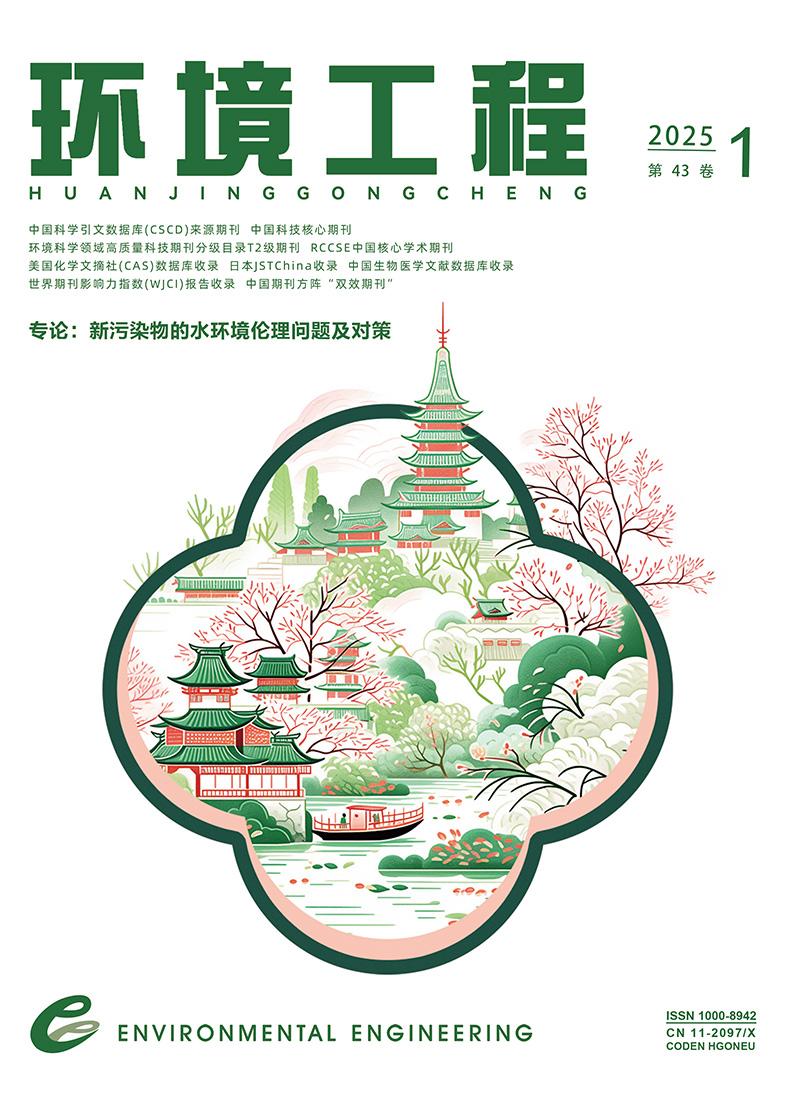| [1] |
郭朋.城市建筑与小区雨水利用工程综合评价的研究[D]. 昆明:昆明理工大学,2017. GUO P. Comprehensive Evaluation of Urban Construction and Community Rainwater Utilization Project Research[D]. Kunming: Kunming University of Science and Technology,2017.
|
| [2] |
刘勇, 聂含冰, 江成, 等.新型透水铺装对雨水径流水量和水质控制效果现场研究[J/OL].环境工程:1-8. http://kns.cnki.net/kcms/detail/11.2097.X.20230925.
1012.010.html. LIU Y, NIE H B, JIANG C, et al. Field study on the control effect of new permeable pavement on rainwater runoff quantity and water quality[J/OL]. Environmental Engineering:1-8. http://kns.cnki.net/kcms/detail/11.2097.X.20230925.1012.010.html.
|
| [3] |
中华人民共和国国务院.中共中央国务院关于进一步加强城市规划建设管理工作的若干意见(中发
|
| [4] |
丁亚楠,王建国,汤露露.典型雨水收集处理系统的生命周期评价[J].四川环境,2020,39(4):194-199.
DING Y N, WANG J G, TANG L L. Life cycle assessment of typical rainwater collection and treatment system[J]. Sichuan Environment,2020,39(4):194-199.
|
| [5] |
田立亭,程林,郭剑波,等.基于能值分析的多能互补综合能源系统价值评估方法[J].电网技术,2019,43(8):2925-2934.
TIAN L T, CHENG L, GUO J B, et al. Multi-energy system valuation method based on emergy analysis[J]. Power System Technology, 2019,43(8):2925-2934.
|
| [6] |
郭清,常儇宇.基于模糊综合评价法的地块海绵城市建设效果评估[J].给水排水,2021,57(增刊1):167-171. GUO Q, CHANG X Y. Assessment of sponge city construction effects based on fuzzy comprehensive evaluation method[J]. Water& Wastewater Engineering, 2021,57
(S1):167-171.
|
| [7] |
马瑾瑾,陈星,许钦.海绵城市建设中雨水资源利用潜力评价研究[J].水资源与水工程学报,2019,30(1):27-32.
MA J J, CHEN X, XU Q. Evaluation of regional rainwater resources utilization potential in sponge city construction[J].Journal of Water Resource &Water Engineering, 2019,30(1):27-32.
|
| [8] |
钱嘉欣,武家辉,姚磊,等.基于能值分析和多目标决策法的CCHP-PV-Wind系统综合性能评估研究[J].电力系统保护与控制,2021,49(2):130-139.
QIAN J X, WU J H, YAO L, et al. Comprehensive performance evaluation of a CCHP-PV-Wind system based on energy analysis and a multi-objective decision method[J]. Power System Protection and Control,2021,49(2):130-139.
|
| [9] |
JOKSIMOVIC D, ALAM Z. Cost efficiency of low impact development (LID) stormwater management practices[J]. Procedia Engineering, 2014, 89: 734-741.
|
| [10] |
DEO A, KARMAKAR S, ARORA A. Rainwater harvesting and water balance simulation-optimization scheme to plan sustainable second crop in small rain-fed systems[J]. Journal of Environmental Management, 2022, 323: 116135.
|
| [11] |
BROWN M T, SERGIO U. Assessing the global environmental sources driving the geobiosphere: a revised emergy baseline[J]. Ecological Modelling,2016,339.
|
| [12] |
KIM J. Exploring green infrastructure benefits at house and neighborhood scale: case Study of Illinois[J]. Landscape and Ecological Engineering,2017:145-146.
|
| [13] |
李诗雨,柏云声,龚静仪,等.海绵小区蓝绿基础设施的生态效益综合评估与应用潜力分析[J].国土资源情报,2022(1):63-77. LI S Y, BAI Y S, GONG J Y, et al. Comprehensive evaluation of ecological benefits and application potential analysis of blue-green infrastructure in sponge community[J]. Land and Resources Information,2022
(1):63-77.
|
| [14] |
任丽燕,吴次芳,岳文泽.西溪国家湿地公园生态经济效益能值分析[J].生态学报,2009,29(3):1285-1291.
REN L Y, WU C F, YUE W Z. Emergy analysis of the ecological economic system of Xixi National Wetland Park[J]. Acta Ecologica Sinica,2009,29(3):1285-1291.
|
| [15] |
付恒阳,李榜晏.基于能值分析的LID可持续性评价[J].西北大学学报(自然科学版),2017,47(5):761-768. FU H Y, LI B Y. Sustainability assessment for Low-impact development based on emergy analysis[J]. Journal of Northwest University (Natural Science Edition),2017,47(5):761-768.
|
| [16] |
ODUM H T. Environmental Accounting Emergy and Environmental Decision Making[M]. New York: John Wiley &Sons, 1996: 294-303.
|
| [17] |
ZHANG W B, LI Z H, LI S P, et al. Evaluation of the ecological benefits of recycling multiple metals from lithium battery saggars based on emergy analysis[J]. Sustainability, 2021,13(9):10745-10745.
|
| [18] |
蓝盛芳.生态经济系统能值分析[M].北京:化学工业出版社, 2002. LAN S F. Emergy analysis of eco-economic system[M].Beijing: Chemical Industry Press,2002.
|
| [19] |
BROWN M T, ULGIATI S. Emergy assessment of global renewable sources[J]. Ecol. Modell., 2016,339: 148-156.
|
| [20] |
陈思英,郑军,杨书运,等.基于MODIS数据的安徽淮河流域陆地植被净初级生产力分析[J].安徽农学通报,2013,19(7):124-125.
CHEN S Y, ZHENG J, YANG S Y, et al. Analysis of Terrestrial NPP Based on the MODIS in Huaihe River Basin of Anhui Province[J]. Anhui Agricultural Science Bulletin, 2013,19(7):124-125.
|
| [21] |
宋喜芳,常小箭,赵永锋,等.西安市果园固碳制氧功能及生态价值评估[J].陕西农业科学,2019,65(3):76-79.
SONG X F, CHANG X J, ZHAO Y F, et al. Carbon sequestration and oxygen production function and ecological value evaluation of orchards in Xi'an[J].Shaanxi Journal of Agricultural Sciences,2019,65(3):76-79.
|
| [22] |
钱锋,王伟东.建筑环境效率能值分析与评价:以北京大学体育馆为例[J].建筑学报,2007(7):39-42. QIAN F, WANG W D. Emergy analysis and evaluation of building environmental efficiency:take Peking University Gymnasium as an example[J]. Architectural Journal,2007
(7):39-42.
|
| [23] |
郑涛.居住社区海绵改造过程的碳排放核算研究[J].中国给水排水,2021,37(19):112-119.
ZHENG T. Estimation of carbon emission during sponge city reconstruction of residential community[J]. China Water & Wastewater, 2021,37(19):112-119.
|
| [24] |
LI D, DU B, ZHU J. Evaluating old community renewal based on emergy analysis: a case study of Nanjing[J]. Ecological Modelling, 2021, 449: 109550.
|
| [25] |
李婷婷. 基于能值分析的安徽省城市生态系统健康评价[D]. 蚌埠:安徽财经大学,2017. LI T T. Evaluation of Urban Ecological Health Based on Emergy Analysis of Anhui Province[D]. Bengbu: Anhui University of Finance and Economics,2017.
|
| [26] |
NACIMENTO R A, MORENO D A R, LUIZ V T, et al. Sustainability assessment of commercial Brazilian organic and conventional broiler production systems under an emergy analysis perspective[J]. Journal of Cleaner Production, 2022, 359: 132050.
|
| [27] |
YU X, GENG Y, DONG H, et al. Emergy-based sustainability assessment on natural resource utilization in 30 Chinese provinces[J]. J. Clean. Prod.,2016,133:18-27.
|
| [2016] |
6号)[EB/OL][2022-09-14].http://www.gov.cn/zhengce/2016-02/21/content_5044367.htm. State Council, PRC. Several Opinions of the CPC Central Committee and The State Council on Further Strengthening Urban Planning and Construction Management (Zhongfa
|
| [2016] |
No.6)[EB/OL].[2022-09-14].http://www.gov.cn/zhengce/2016-02/21/content_5044367.htm.
|


 Login
Login Register
Register E-alert
E-alert






 DownLoad:
DownLoad: